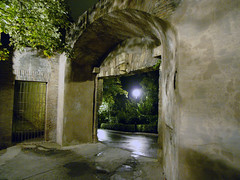Posts tagged ‘ancient Egypt’
Games, swords and jewelry from the life of Isis
All of us have seen beautiful works of art from ancient Egypt. Here I’d like to share some photos I’ve taken that give you a feeling for the daily life of my Isis of The Red Mirror. These are actual artifacts, thousands of years old.
If you’re like me, you love to imagine the hands that poured jasmine oil from glass flasks – or shaved heads and mounds with copper blades. Each object has a story – tales of love and disappointment, tragedy and triumph. And each object has a history that begins with the man who wrought it into being and those who used or wore it, then continues through the lives of all who have held the object in their own hands over the centuries – and finally to those who gaze upon it in wonder today.
The Isis story embellished with my photos
I’m posting a few of my Egypt photos here in hopes that I can bring the Isis story even more to life for my readers. Click on the image to enlarge. Look for more Sandra Gore photos in upcoming posts 🙂
Some of the following pictures are from one of my visits to Egypt. Some of the shots are from the British Museum in London, while a few precious ones are from the wonderful Petrie Museum just a short walk away. What a reservoir of history is the Petrie, and not just the ancient artifacts of pre-dynastic times – of which there is an abundant and rich display. The Petrie is a step back in time to the first days of true Egyptology.

When Isis sees wings painted on the lintels above her head, they might have looked something like this.

Example of painted open Papyriform capitals. Imagine the jewels colors when they were new! Taken at Ramesseum outside Luxor, Egypt.

Example of Aramaic writing. Aramaic was the lingua franca spoken by Eben, the Kabbalist and among the Persians soldiers. Isis spoke Aramaic with the General.

Here is the cow-eared goddess Hathor. The same face would have topped the pillars in the Hathor Temple. Known as the Queen’s Boat Hathor Head, British Museum.

Beaded “fishnet dress” similar to one Isis wore on her visit to the Temple of Min in Khent-min. Petrie Museum.

Glass vials like these might have held medicines, oils or the poisons designed to terminate Isis’ pregnancy – or even her life if captured. Petrie Museum.

Example of how hieroglyphs were painted in colors. This was taken in the tomb of the sons of Ramses III in the Valley of the Kings, Luxor Egypt

Sit-hathor might have worn a wig like this when she summoned Isis to the temple to tell her of the mission. Cairo Museum

Heavy gold bracelets like these adorned Ankh-hor’s arms when he feted Isis and Qeb-ha at the feast in Hermopolis. British Museum.

These eyes are made with faience, the process somewhat between ceramic and glass, of which the amulets were made that Isis traded for goods in the market. British Museum

Sacred Sistrum with head of Hathor that Isis might have used in the temple scene with the Crown Prince and Setne the Scribe. British Museum

Persian lion shield ornament. This would have adorned the leather vests of the Persian soldiers in the desert. British Museum.

A strand of polished Carnelian beads as might have been “strung on long ropes” in the marketplace of Khent-min. Petrie Museum.

Gold pieces from an Egyptian necklace. Most likely would have been strung with beads made from faience or semi-precious stone such as turquoise or carnelian. British Museum.

Faience and gold amulets, cartouche, pendant. Any of these would have been commonplace in Isis’ world. Petrie Museum.




































